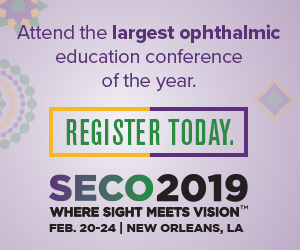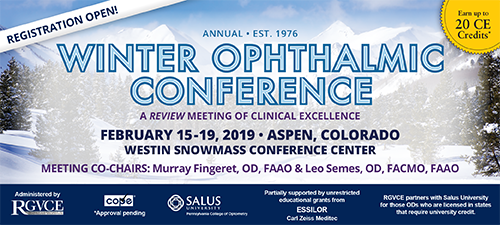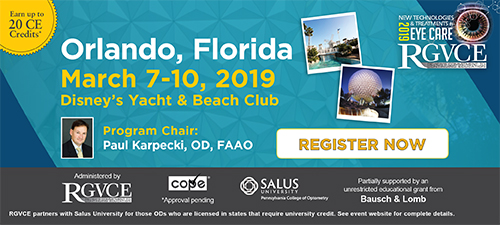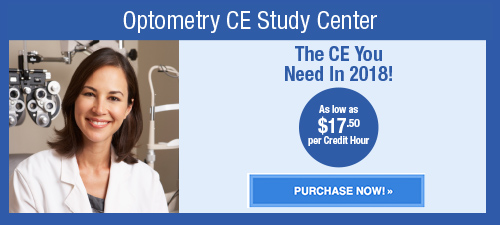
A
weekly e-journal by Art Epstein, OD, FAAO
Off the Cuff: Turning a New Leaf
If 2019 turns out anything like 2018 did, this should be a very interesting year. To get things rolling, I thought I would start off with some good news for a change—or at least what I hope will turn out to be good news.
|
|||||
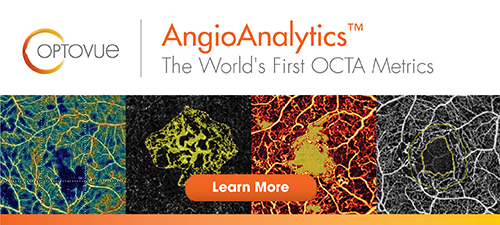 |
||
| Comparison of Three Different Tonometers in Eyes with Angle Closure | ||||
Precise measurement of intraocular pressure (IOP) is essential when diagnosing and managing glaucoma. Researchers compared the IOP readings of three different tonometers and analyzed agreement among tonometers in eyes with high IOPs. The purpose of this study was to compare the IOP readings obtained using a Goldmann applanation tonometer (GAT), a rebound tonometer (RT), and a Tono-Pen (TP) in angle-closure eyes with elevated IOP before and after medical IOP-lowering therapy. Twenty-five eyes of 25 patients with angle closure and IOPs of greater than 30 mmHg were enrolled. Intraocular pressure was measured using RT (iCare Pro), TP (Tono-Pen XL), and GAT before and after medical treatment. The mean IOP readings of the tonometers were compared before and after treatment. The agreement among the tonometers was assessed via Bland-Altman analysis.
The measurements from 22 eyes of 22 patients were suitable for statistical analyses. Before medical treatment, the mean TP-IOP was significantly lower than the mean GAT-IOP (44.0 ± 10.3 vs. 50.4 ± 8.9 mmHg, respectively), but no significant difference was evident between the RT-IOP and the GAT-IOP (50.8 ± 10.9 vs. 50.4 ± 8.9 mmHg, respectively). After IOP-lowering treatment, the mean GAT-IOP (14.9 ± 4.7 mmHg) did not differ from either the mean RT-IOP (15.6 ± 4.4 mmHg) or the mean TP-IOP (15.4 ± 5.0 mmHg). The random measurement error among tonometers was greater for high IOP readings. Researchers wrote that, compared with RT or GAT, TP underestimated IOP in angle-closure eyes with a GAT-IOP of greater than 30 mmHg. They added that intraocular pressure reading agreement among the three tonometers was lower in eyes with high IOP. |
||||
SOURCE: Lee TE, Yoo C, Kim YY. Comparison of three different tonometers in eyes with angle closure. Optom Vis Sci. 2018; Dec 26. [Epub ahead of print]. |
||||
|
|||
| Dry Eye Symptoms May Have Association with Psychological Stress in Medical Students | ||||
This cross-sectional study included 209 students at a medical school in Korea to evaluate the prevalence and risk factors of symptomatic dry eye disease (DED) among medical students. Dry eye symptoms were assessed using a nine-item questionnaire, and DED was defined as having one or more dry eye symptoms often or all the time. The ocular surface disease index (OSDI) and visual analog scale (VAS) questionnaires were also administered to quantify the dry eye symptoms. A survey including demographic data, potential risk factors for DED, personal habits and psychological stress was also performed.
Of the 209 students, 188 (93 men and 95 women) completed the survey. The average age was 28 ± 2.5 (mean ± SD; range, 23-37) years. Prevalence of DED was 27.1% (51/188). Participants with DED had significantly higher VAS and OSDI than those without DED. Univariate analysis revealed that female sex (p=0.001), contact lens (CL) wear (p=0.034), prolonged computer use (p=0.001) and higher psychological stress score (p<0.001) had significant association with DED. Multivariate analysis also showed the significant association between DED and female sex (p=0.026), CL wear (p=0.042), prolonged computer use (p=0.004) and higher stress score (p=0.014). Symptomatic DED was prevalent among medical students. Increased psychological stress was associated with higher risk of DED. DED risk also increased among women, CL wearers and prolonged computer users. |
||||
SOURCE: Hyon JY, Yang HK, Han SB. Dry eye symptoms may have association with psychological stress in medical students. Eye Contact Lens. 2018; Dec 21. [Epub ahead of print]. |
||||
| Acute Narrow-angle Glaucoma Induced by Topiramate with Acute Myopia And Macular Striae: A Case Report | ||||
Investigators reported the case of a 29-year-old epileptic woman who had been treated with topiramate 25mg/day for nine days. She was referred to the emergency department due to reduction in distance visual acuity (VA) after increasing the dose to 50mg/day two days before.
Ocular examination showed bilateral acute angle-closure glaucoma (AACG) and macular striae in both eyes (AO) observed by retinography and optical coherence tomography (OCT). Investigators wrote that AACG is a well-known side effect of topiramate, but macular striae rarely accompanies it. Although macular striae have been previously described in other cases, very few report using retinography and OCT images. Therefore, investigators suggested, it is important to differentiate a case of AACG induced by topiramate from a case of primary AACG, since they differ in their clinical presentation, mechanism of action and treatment. Mismanagement can have potentially serious consequences, investigators added. |
||||
SOURCE: Sierra-Rodríguez MA, Rodríguez-Vicente L, Chavarri-García JJ, et al. Acute narrow-angle glaucoma induced by topiramate with acute myopia and macular striae: A case report. Arch Soc Esp Oftalmol. 2018; Dec 24. [Epub ahead of print]. |
||||
| News & Notes | ||||||||||||||||||||||
Primary Eyecare Network Offering Scleral Lenses Workshop with Leading OD
|
||||||||||||||||||||||
| Optometric Organizations Establish New COPE Governing Committee The American Academy of Optometry, the Association of Schools and Colleges of Optometry and the Association of Regulatory Boards of Optometry announced a joint agreement was reached to restructure the governance of the Council on Optometric Practitioner Education (COPE). The newly established COPE Governing Committee will be comprised of representatives from ARBO, ASCO and the Academy to assure collaboration and the ongoing advancement of the quality of optometric continuing education. COPE accredits optometric continuing education for use by ARBO’s member regulatory boards in assessing and determining eligibility for licensure by optometrists. COPE accreditation serves the public, regulatory boards and the profession by promoting improvement in competence, performance and patient outcomes. Initial nominations to the COPE Governing Committee are underway, with expected completion in January 2019. Read more. |
||||||||||||||||||||||
| Alcon Acquires Tear Film Innovations Alcon acquired Tear Film Innovations, a privately held company and manufacturer of the iLux Device, used to treat meibomian gland dysfunction. Handheld and portable, the iLux enables eye care professionals to target a patient's blocked meibomian glands and provide therapy through an in-office treatment. A practitioner can warm the eyelids via disposable silicone pads to address blocked meibomian glands through the application of light-based heating. While applying the device, the practitioner is able to view the eyelid margin and apply manually controlled compression to express blockages, making adjustments as needed to tailor treatment to the individual needs of the patient. Read more. |
||||||||||||||||||||||
|
||||||||||||||||||||||
|
Optometric Physician™ (OP) newsletter is owned and published by Dr. Arthur Epstein. It is distributed by the Review Group, a Division of Jobson Medical Information LLC (JMI), 11 Campus Boulevard, Newtown Square, PA 19073. HOW TO ADVERTISE |


